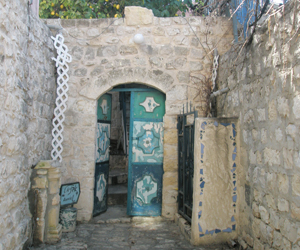Safed As The Evolving City
Early mentions of the Israeli town of Safed are few and far between. The Jerusalem Talmud makes reference to the area as one of five locations where fires were lit to announce festivals or a new moon during the period of the Second Temple. Safed fit the bill for this purpose, situated as it is at the highest topographical point in Israel. The Jewish calendar is based on the lunar cycle and people in far-flung locations depended upon seeing the fire and smoke from these five mountainous areas as a means of delineating the special days and times of Jewish observance.
Study House
Somewhat earlier, Jewish legend has it that the city was founded by one of Noah's sons, after the great flood. Noah named this son "Shem" which means "name" and is a reference to Noah's desire that his son would dedicate his life to spreading the name and word of God. Shem founded the first house of Jewish learning, or Yeshiva, in the town of Safed, along with his son Eber and this "Yeshivat Shem V'Ever" is considered to be the study house in which all the Jewish forefathers: Abraham, Isaac, and Jacob, studied Jewish law.
While Safed is home to many caves just waiting to be explored, the Cave of Shem V'Ever, situated near to the bridge just above Jerusalem Street, and not far from Palmach Street, is the most famous of all. This cave is believed to be the actual location of the famous study hall where the son and grandson of Noah, Shem and Eber, founded their academy of learning. Inside the dim and musty interior the caretaker, an elderly man, will offer to light a candle and recite a prayer on your behalf and it is customary to respond with a donation.
Roman Dominion
Sepph is mentioned in the writings of the Jewish historian Flavius Josephus, who documented Roman dominion over the area. In his book Wars 2:573 Josephus describes a fortified town by this name which is believed to have existed at the site of Crusader citadel in Safed. While some Roman period pottery shards have been found on Citadel Hill, most of the remains from the Roman era were obliterated by the erection of the huge Crusader fortress. It is believed that Safed only reached its current proportions, those of a true city, at the time of the Roman occupation.

